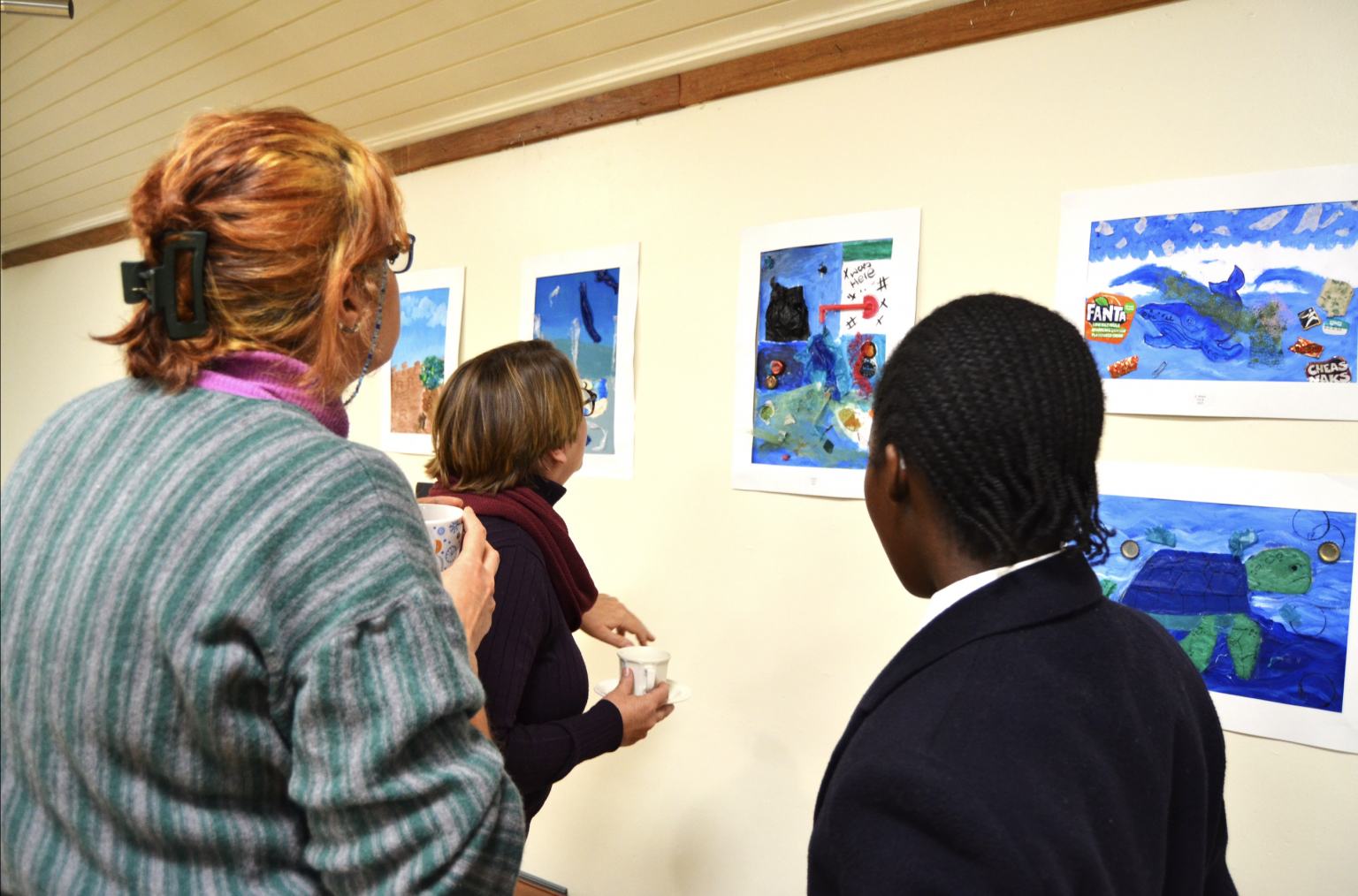By Siyamthanda Ndinisa and Andisile Klaas
As National Marine Week kicked off in October, the NRF-South African Institute for Aquatic Biodiversity (SAIAB) took a unique and creative approach to raise awareness about the marine and coastal environment. In collaboration with the Johan Carinus Art Centre and Victoria Girls’ High School based in Makhanda, SAIAB hosted a compelling Plastic Pollution Art Exhibition to showcase the creative artwork produced by grade 8 learners from Victoria Girls’ High School.
National Marine Week is celebrated every year during the second week of October. Driven by the Department of Forestry, Fisheries and the Environment (DFFE) as a custodian of marine resources in South Africa, Marine Week aims to create awareness of the marine and coastal environment, promote sustainable use and conservation of these resources for the benefit of all both present and future generations. In line with this mission, SAIAB turned the spotlight on the critical issue of plastic pollution through the lens of art. The Plastic Pollution Art Exhibition served as a powerful platform to engage the community and drive home the urgency of marine conservation.
The art exhibition, held in SAIAB’s lecture room on the 10 October, showcased the creative talents of the Grade 8 learners, who harnessed their artistic skills to communicate the devastating effects of plastic pollution in our oceans. The learners’ artworks were made from recycled materials, emphasising the importance of reducing, reusing, and recycling plastic.
Senior Scientist Prof Francesca Porri delivered an impactful address at the exhibition, inspiring the audience to take action against plastic pollution. She urged the audience to reduce their plastic usage and make an effort to reuse plastics they already have rather than dispose of them, which can contribute to plastic pollution.
“I hope that from the exhibition and my speech, people will start to actively use less plastic. I hope they take my advice to purchase less plastic and use glass containers. Reusing items like yoghurt containers for alternative purposes instead of discarding them may not provide a final solution, but they are meaningful steps in the right direction,” Prof Porri emphasised.
In reflecting on the collaboration, the natural science teacher at Victoria Girls’ High School, Sarah Hanton, who also serves on the governing body of the Johan Carinus Art Centre, shared her passion for raising awareness of plastic pollution through art. “I spoke with the learners’ art teacher at the art centre that I wanted to make an awareness of plastic pollution through art; it was a good way for kids to learn about the impact of plastic pollution. Hence, the project started with the grade 8s. When the project was done, I thought we should do something with these arts, and so I contacted SAIAB, and that’s how the initiative for the exhibition came about,” she said.


